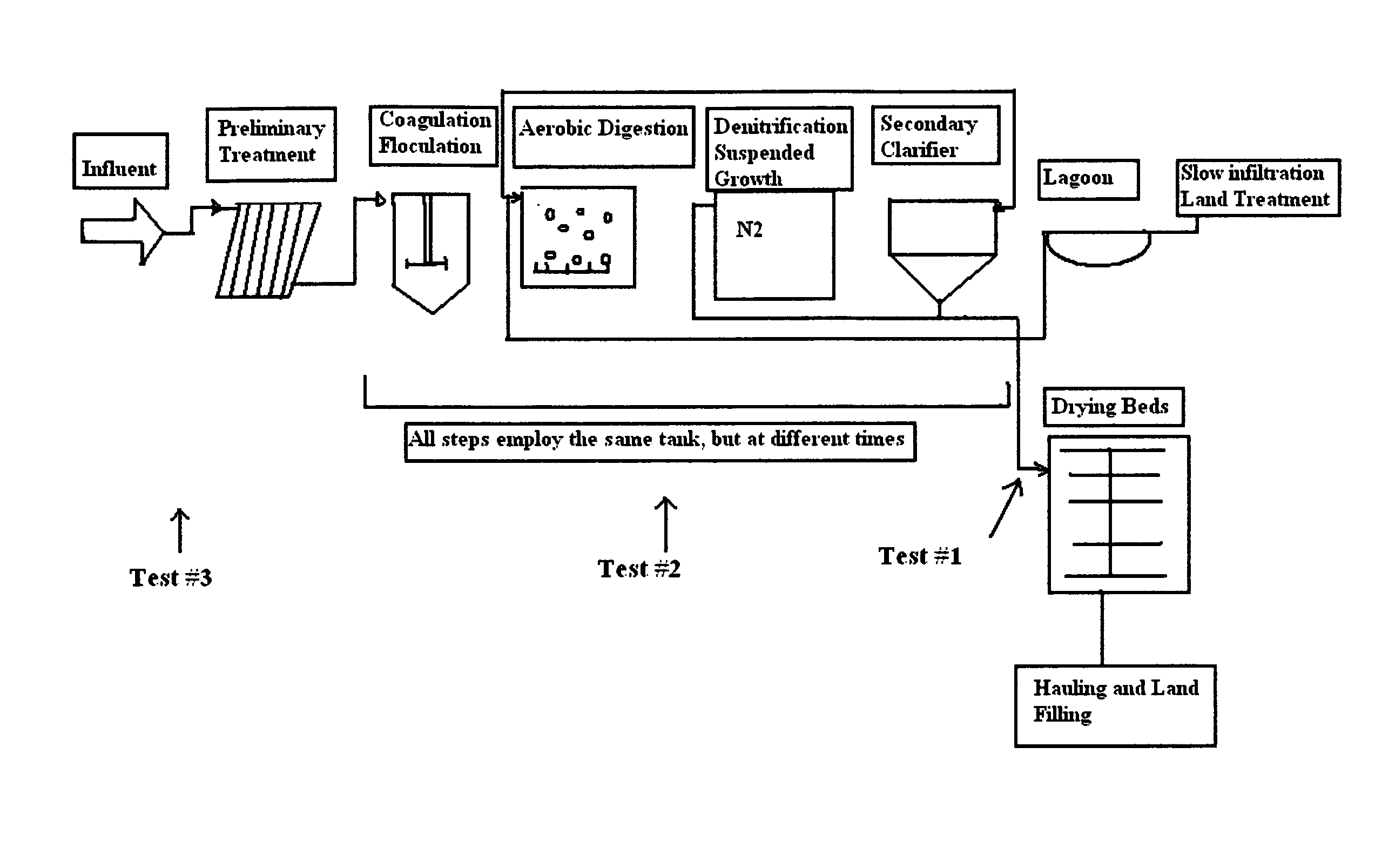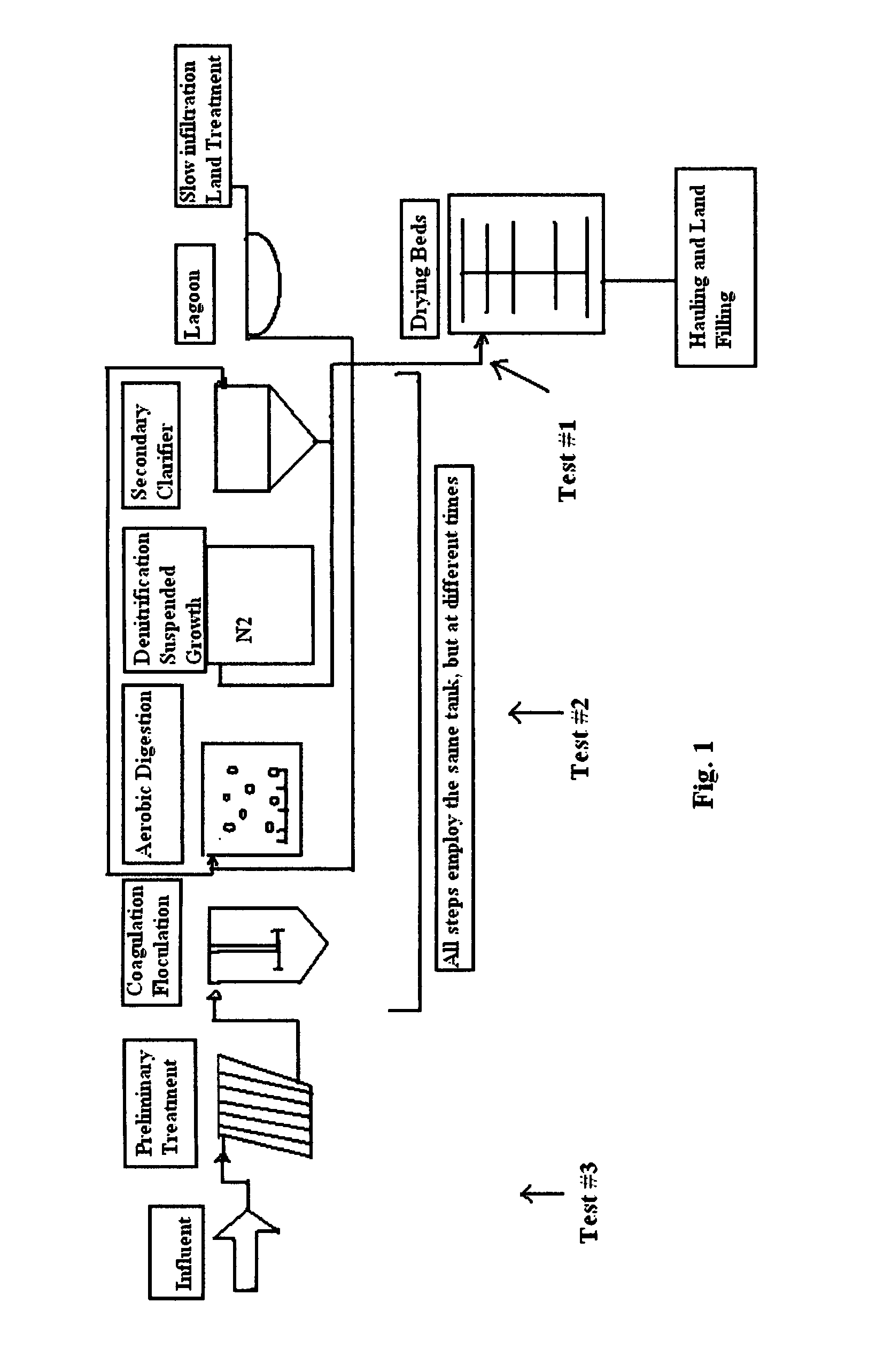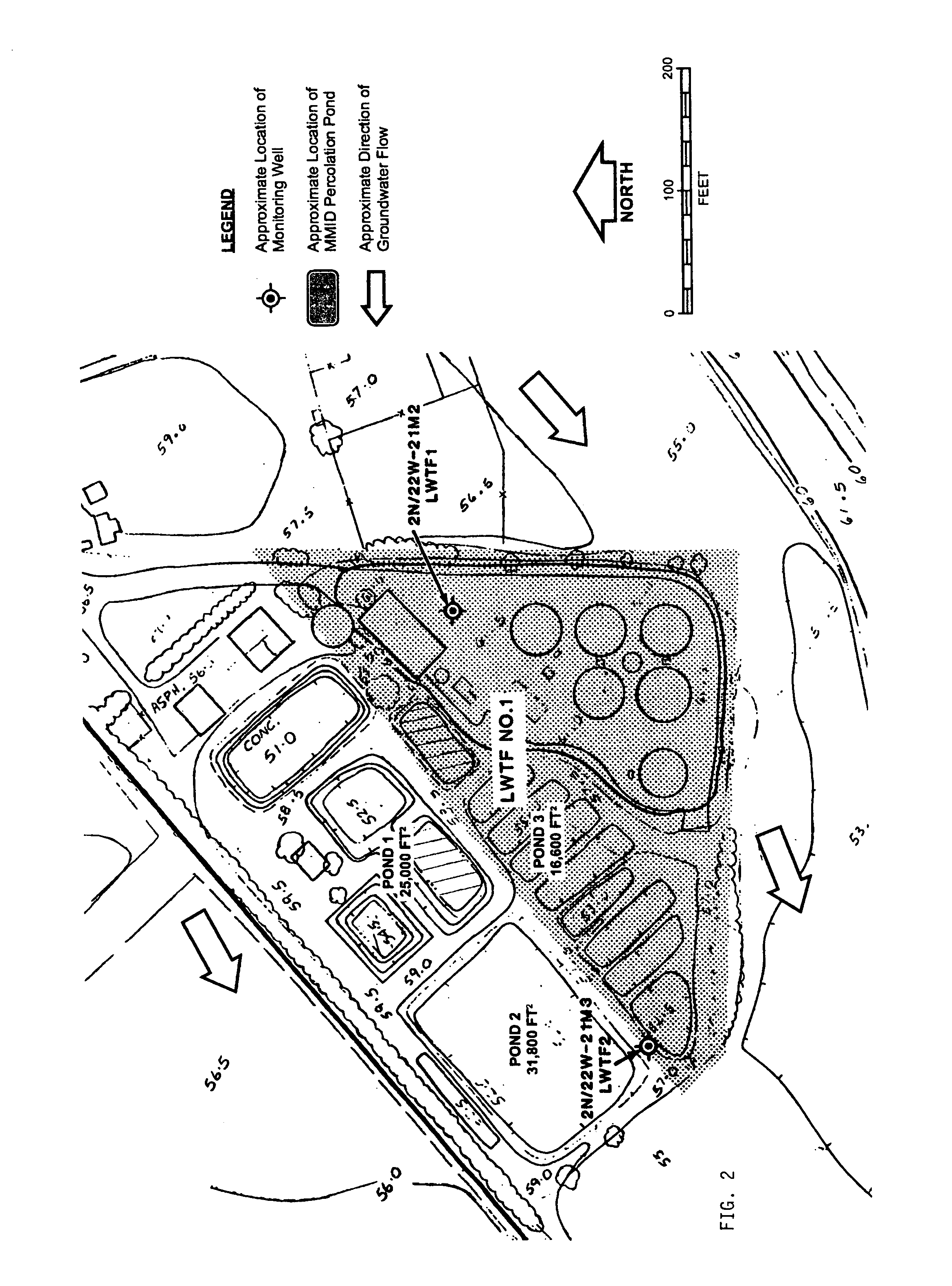Wastewater chemical/biological treatment plant recovery apparatus and method
a technology of chemical/biological treatment and recovery equipment, which is applied in the direction of sedimentation separation, solid separation, different sedimentation, etc., can solve the problems of unsuitable material for any beneficial use, unsuitable sludge or biosolids arising from industrial discharges, and limit the application of semi-liquid material to nearby farmland, etc., to achieve the effect of minimizing the exposure to contaminant, avoiding the impact of transportation costs, and avoiding contamination
- Summary
- Abstract
- Description
- Claims
- Application Information
AI Technical Summary
Benefits of technology
Problems solved by technology
Method used
Image
Examples
Embodiment Construction
[0072]The method and apparatus of the present invention was field tested at the Montalvo Municipal Improvement District Water Pollution Control Plant in Ventura, Calif. for recovery of wastewater for land application. Montalvo Municipal Improvement District, a municipality owns the Montalvo Water Pollution Control Plant (Plant), located at 3555 Ventura Road, Montalvo, Calif. Treated domestic and commercial wastewaters are discharged under Waste Discharge Requirements contained in Order No. 87-092, adopted by the Regional Board on Jun. 22, 1987. The present wastewater treatment system shown in FIG. 1 consists of bar screening, comminuting, influent holding tank, two independent sequencing aerobic and denitrification batch reactors, with discharge into a final lined polishing pond. No off-site transfer or usage of treated wastewater is presently employed. The waste activated wastewater liquids between the floating and settling solids is extracted and discharged to the subsurface throu...
PUM
| Property | Measurement | Unit |
|---|---|---|
| Concentration | aaaaa | aaaaa |
| Size | aaaaa | aaaaa |
| Particle size | aaaaa | aaaaa |
Abstract
Description
Claims
Application Information
 Login to View More
Login to View More - R&D
- Intellectual Property
- Life Sciences
- Materials
- Tech Scout
- Unparalleled Data Quality
- Higher Quality Content
- 60% Fewer Hallucinations
Browse by: Latest US Patents, China's latest patents, Technical Efficacy Thesaurus, Application Domain, Technology Topic, Popular Technical Reports.
© 2025 PatSnap. All rights reserved.Legal|Privacy policy|Modern Slavery Act Transparency Statement|Sitemap|About US| Contact US: help@patsnap.com



